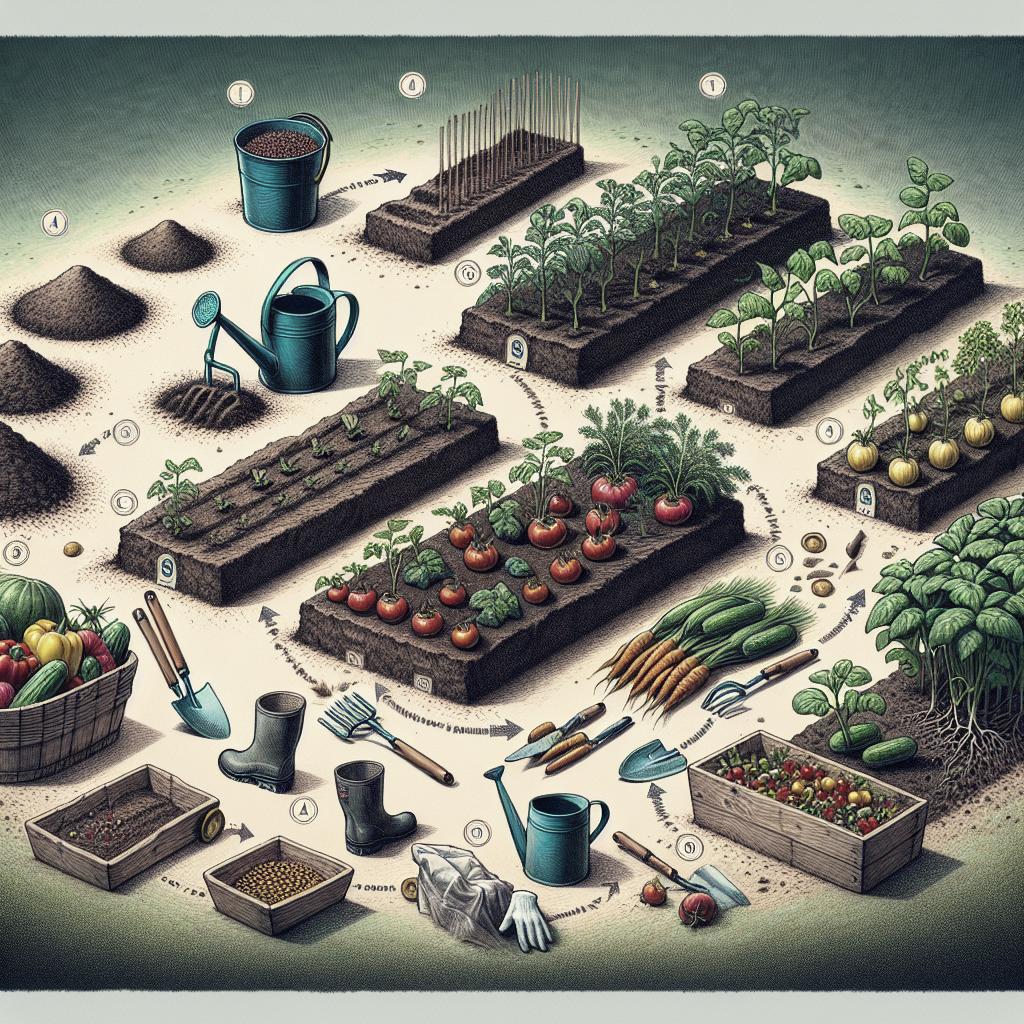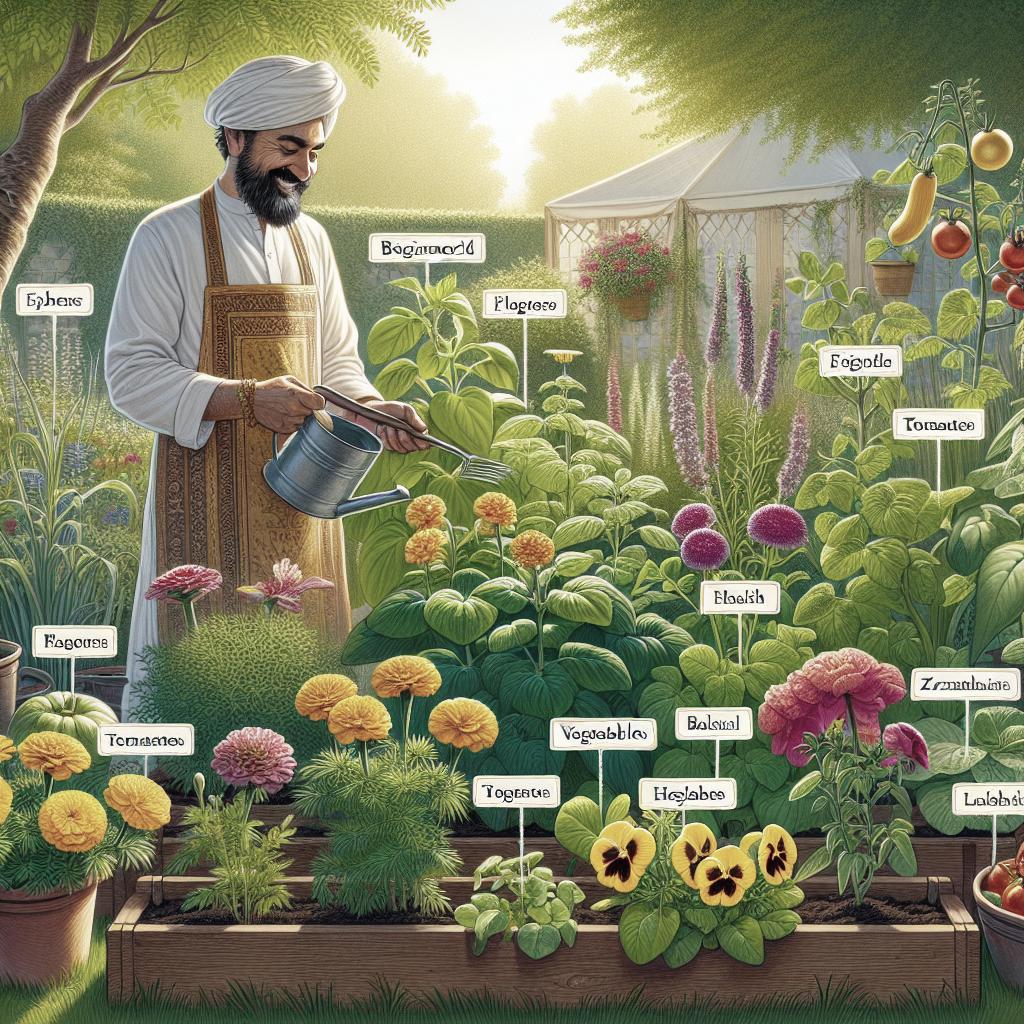“`html
How to Make Natural Fertilizer from Kitchen Waste
In an era where sustainable living has become a priority, using kitchen waste to enrich our gardens is both an eco-friendly and effective practice. Many common kitchen scraps are rich in essential nutrients that plants need to thrive. This blog post explores how everyday discarded items such as carrot scraps, banana peels, eggshells, and more can be transformed into natural fertilizers. From the nitrogen-rich content of coffee grounds to the calcium shell of eggs, these organic materials can contribute significantly to plant health. Read on to discover how to turn waste into gold for your garden.
1. Carrots
Carrots are not just on our plates to nourish us; their waste can greatly benefit plants too. The tops and peels that we often discard when preparing carrots are packed with vital nutrients that can enrich the soil. Rich in potassium and other minerals, carrot scraps can be a great addition to your compost pile. When broken down, they provide plants with these nutrients, enhancing root development and offering stronger resistance against disease.
To use carrot waste as fertilizer, thoroughly wash the scraps to remove any chemical residues. Next, shred or finely chop them to accelerate the decomposition process. Mix them directly into your compost bin, or bury them in the flowerbed for a natural, slow-release nutrient source. Reusing these greens not only reduces kitchen waste but also contributes to a sustainable gardening routine.
2. Banana Peel
Banana peels are one of the most potent natural fertilizers you can produce at home. They are known for their high potassium content, which is crucial for plant growth, promoting stronger stems and resistance to diseases. Additionally, banana peels contain phosphorus and calcium, which aid in flower and root development, making them perfect for blossoming plants and fruit trees.
After enjoying your banana, don’t throw the peel away. Instead, cut it into small pieces and place them directly in the soil surrounding your plants. As they decompose, they will release nutrients slowly. Alternatively, you can soak banana peels in water for a few days to create a nutrient-rich tea that can be poured directly onto the soil or used in foliar feeding by applying it to the leaves of your plants.
3. Eggshells
Eggshells are a rich source of calcium carbonate, essential for strengthening the cell walls of plants. Incorporating eggshells into your gardening routine can help prevent diseases such as blossom-end rot, common in tomatoes and peppers. Moreover, eggshells act as a natural pest deterrent; when crushed, they create a barrier that snails and slugs shy away from.
To use eggshells, rinse them thoroughly and allow them to dry. Crush them into a fine powder to speed up their decomposition and enhance nutrient absorption by the soil. You can add this powder directly to the soil or mix it into your compost pile. Alternatively, use the whole shells as seed starters; they are biodegradable and will naturally enrich the soil once planted.
4. Coffee Ground
Coffee grounds are a miracle ingredient for both compost and plant food. Rich in nitrogen, a critical component for plant growth, coffee grounds can invigorate the soil and encourage lush, green foliage. They also improve soil structure, fostering better moisture retention and drainage.
To repurpose coffee grounds, simply sprinkle them over the soil or mix them into your compost. If you have acid-loving plants like blueberries or roses, coffee grounds can help maintain the ideal pH level. However, use them in moderation; excessive amounts can lead to an overly acidic soil environment. Storming the coffee basket into your gardening routine is a sustainable step that can lead to impressive blooms and yields.
5. Green Tea
Green tea leaves, known for their antioxidant properties, also serve as a nourishing addition to your garden. They contain tannins and nutrients that boost plant growth and improve soil quality. Green tea leaves are particularly beneficial for acid-loving plants like azaleas and tomatoes.
To utilize green tea, you can bury used tea leaves around your plants or add them to your compost bin. Another method is to make a tea compost by soaking the tea bags in a container of water for a few days. This “green tea” for plants can be used to water them directly, infusing the soil with its beneficial properties. Remember to remove any staples or strings from the tea bags before burying or soaking.
6. Fruits
Overripe or spoiled fruits might be unappealing to us, but they are packed with nutrients that plants love. Fruits such as apples, berries, or melons contain sugars, vitamins, and minerals that can benefit soil health and enthusiasm biological activity.
To harness the power of fruit waste, chop the fruit into small pieces and add them to your compost pile. Their high moisture content can speed up the composting process, creating a nutrient-rich compost that can be returned to nourish your plants. You can also bury fruit scraps directly in the garden. As they decompose, they add organic matter that enriches the soil.
7. Leafy Vegetables
Leafy vegetables, often wasted due to their rapid spoilage, are excellent for composting. Greens like lettuce, spinach, and kale, when decomposed, release nitrogen and other essential nutrients into the soil. These nutrients promote healthy foliage growth and enhance the overall soil structure, making it more fertile and ready for planting.
To use leafy vegetable scraps, simply chop them up and add them to your compost bin. They break down quickly, especially when shredded, accelerating the composting process. Alternatively, you can use them as mulch; lay the scraps over the soil to retain moisture, suppress weeds, and slowly release their nutrients as they decay.
8. Garlic and Onion Peel
Garlic and onion peels are usually discarded due to their tough exterior, but they are surprisingly useful in the garden. These peels possess antifungal and antibacterial properties, which can help protect plants against diseases and pests. Additionally, they contain nutrients like sulfur, which is vital for plant growth.
To use these peels, collect them in a bag and, when ready, crush and sprinkle them around your plants or mix them into the compost heap. Their tough nature means they take longer to decompose, but they provide a persistent source of nutrients and protection over time. Furthermore, you can boil the peels in water to create a foliar spray that deters aphids and other pests.
9. Peas and Beans
Peas and beans are part of the legume family, known for their ability to fix nitrogen in the soil. This makes them a superb addition to garden soil as they naturally enrich it with nitrogen, a nutrient that plants require to grow strong and healthy.
After enjoying a meal with peas and beans, take the leftover shells and incorporate them into your compost or directly bury them in the garden beds. They decompose quickly and release nitrogen back into the soil. Additionally, you’ll be adding organic matter, which improves soil texture and moisture retention.
Final Thoughts
The journey from kitchen waste to garden gold is not only simple and attainable but also an environmentally responsible way to nurture your plants. By repurposing scraps like carrot tops, banana peels, eggshells, and more, you are creating a sustainable cycle that benefits both the environment and your garden. Each element brings its own set of nutrients and benefits that enrich the soil, foster plant growth, and minimize waste. Embrace these natural fertilizers to unlock a greener and more productive gardening experience.
| Scrap Type | Main Nutrients | Application Method |
|---|---|---|
| Carrots | Potassium, Minerals | Add to compost/bin, or bury in soil |
| Banana peel | Potassium, Phosphorus, Calcium | Bury in soil, or make nutrient tea |
| Eggshells | Calcium Carbonate | Crush and mix into soil/compost |
| Coffee ground | Nitrogen | Sprinkle over soil or mix into compost |
| Green tea | Tannins, Nutrients | Add leaves to compost, or create tea compost |
| Fruits | Sugars, Vitamins, Minerals | Add to compost/bin, or bury in garden |
| Leafy Vegetables | Nitrogen | Add to compost, or use as mulch |
| Garlic and Onion Peel | Sulfur, Anti-fungal Properties | Crush and sprinkle, or boil for spray |
| Peas and Beans | Nitrogen | Add shells to compost, or bury in garden |
Kitchen Scraps FAQs
Q: Can all kitchen scraps be used for composting?
A: Not all kitchen scraps are suitable for composting. Avoid using meat, dairy, oils, and any synthetic materials, as they can attract pests and disrupt the composting process.
Q: How long does it take for kitchen waste to turn into usable compost?
A: With regular turning and the right conditions (moisture, temperature), kitchen waste can turn into usable compost within 2-3 months.
Q: Can I use citrus peels in compost?
A: Citrus peels are best used sparingly in compost as they can take longer to break down and potentially disrupt the pH balance of your compost pile.
“`


